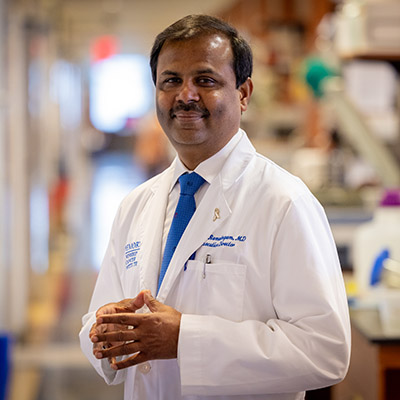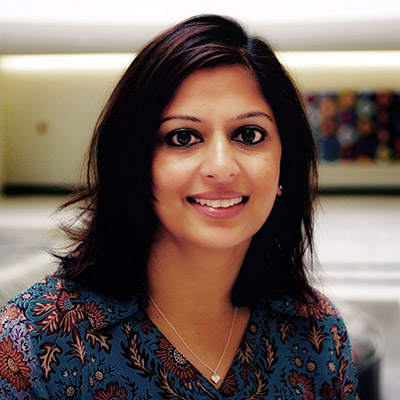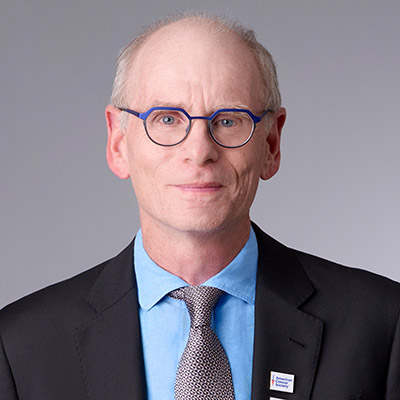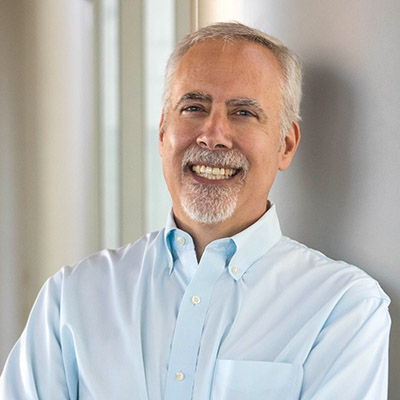Winship and ACS Partner to Reduce Cancer Burden and Risk

Photo: Courtesy of the American Cancer Society
A unique new research partnership between Winship Cancer Institute of Emory University and the American Cancer Society (ACS) will help identify interventions that can reduce the burden and risk of cancer and increase the likelihood that cancer will be diagnosed at an early stage.
It doesn't make sense for us to build a parallel data science team when world experts are right there in the same city with our own scientists.
Supported by a $6 million, three-year grant from the Robert W. Woodruff Foundation, the partnership will focus on building a cloud-based data storage and analytical system that will allow Winship and ACS scientists to analyze and seek practical uses for the massive amount of data and biological samples that ACS has gathered in its three-part Cancer Prevention Study cohorts over the past seven-plus decades.

Suresh S. Ramalingam, MD
ACS's outgoing CEO Karen E. Knudsen, PhD, says the partnership “makes complete sense” since both organizations are based in Atlanta, and it reduces duplication of effort. “It doesn’t make sense for us to build a parallel data science team when world experts are right there in the same city with our own scientists.”
A collaboration between Winship and ACS will support each organization’s mission and will benefit all who will be spared a later-stage cancer diagnosis because of the prevention interventions that will ultimately result. “Cohort studies are mission-critical for understanding cancer risk,” Knudsen says. “It’s honestly one of the only ways to truly get at it.”
What each partner brings
“We have some of the world’s largest population studies focused on cancer,” says Alpa V. Patel, PhD, FACSM, ACS’s senior vice president of population science. “We’ve engaged more than 2.5 million participants across the country in these studies over 70-plus years. But they’re fundamentally underutilized because we are a small team here.”

Alpa V. Patel, PhD
The partnership with Winship will enhance ACS’s ability to analyze the data and samples from its Cancer Prevention Study cohorts. In turn it will provide Winship researchers with the kind of information they need to discern connections between and among data findings, and ultimately to “translate” what they find into real-world interventions and best practices for preventing and treating cancer.
While the ACS is very good at collecting data and specimens, and storing specimens, William L. Dahut, MD, ACS’s chief scientific officer, says ACS needs scientific partners to understand the biology and provide a deeper understanding of what’s going on beyond the statistics. The partnership is “about having a scientific partner who has the capabilities, which really increase our capabilities to understand what's going on with patients.”

William L. Dahut, MD
Dahut says the cohort studies have been aimed at understanding the factors driving cancer diagnosis and outcomes, leading to ways either to prevent or detect cancer earlier on. The new levels of analysis will allow scientists to “go deep” in geographic areas or groups of people and examine the risks associated with environmental factors, obesity or other aspects known to be driving cancer. He says it also will help to “understand it in a way that ultimately can give us the tools that we can use to change the trajectory, whether it’s finding it early or preventing it or changing the outcome.”
Kimberly Kerstann, PhD, Winship's former chief administrative officer and associate director for research administration, says the partnership “opens up the ability for Winship investigators to access the wealth of data that the ACS has available to contribute to new and innovative research ideas.” Likewise, she says ACS benefits by their world-renowned experts having “greater connectivity” to basic and translational scientists at Emory who may be able to use the data and biospecimens ACS has collected “to advance some key research initiatives and pursue new research ideas that the ACS may have not had the infrastructure to pursue.”

Kimberly Kerstann, PhD
She points out that cancer centers like Winship often do studies with people after they have cancer. “The ACS cohorts started collecting data before study participants had cancer and have longitudinal data that can help understand environmental factors that they were exposed to.” She adds that there’s also the potential to utilize genetic data. “The ACS cohorts can provide control populations that we as a cancer center may not have had access to before.”
Ramalingam says, “the synergy here is the key point.” He explains, “Bringing these two groups together and leveraging those resources, which are precious resources, including samples and data, could really accelerate addressing some of the key questions our research teams are focused on.”
First things first — building the infrastructure
The first order of business for the new partnership has been to address the need for a platform for storing, accessing and analyzing the ACS cohort data. “It’s not as exciting,” says Patel, “but we need to make sure that we have a platform that can be accessed by Emory investigators with as much ease as internal investigators at ACS, so there was some investment in that data platform and making it accessible to Winship investigators.”
Patel says that next was building a deeper partnership with Winship to provide ACS with a similar level of “insider access” with Winship resources as Winship's own researchers will have with ACS’s resources.
She says the third important step is making sure that once the infrastructure is built connecting the two institutions, there is funding available “that will support kick-starting some really fun science.”
The infrastructure in question is a cloud-based platform that will be available to the investigators for research in a secure and regulatory-compliant manner. “This data infrastructure also includes bioinformatics and advanced analytic pipelines in the platform,” says Madhusmita Behera, PhD, Winship’s chief informatics and data officer and chief research informatics officer for Emory University. “A researcher, informatician or statistician can go into the platform, access the data directly to build the subject cohorts they want to ask questions about, or the set of participants data they want to study, including clinical data linked with genomics or digital pathology data, and they can analyze the data within the platform. The platform has been designed to be self-serving for users.”
Artificial intelligence (AI) technology and tools are central to the database—and its ability to analyze the vast amounts of data available from the ACS cohorts (See sidebar accompanying this article). “There’s not a way possible for someone to manually curate all of that data and identify what cancer risk looks like,” says Knudsen.
The AI-supported platform will make ACS data available more quickly and effectively than it ever has been before. “The key for this partnership is accelerating something that we know can tell us more about cancer risk through cohorts,” Knudsen says. “And the partnership allows us to work faster together to get answers that people deserve and need.”

Timothy L. Lash, DSc, MPH
Timothy L. Lash, DSc, MPH, Winship’s associate director of population sciences and chair of the Department of Epidemiology at the Rollins School of Public Health, says that “any time you can find ways to reduce barriers to research, it gives opportunities to accelerate the knowledge base.” For this reason, he thinks that “creating this digital portal will give opportunities for new research studies to Emory investigators that lead to new ideas, ultimately new evidence and ultimately new interventions.”
Through the partnership, ACS will provide 10 pilot grants of $100,000 each to support collaborative research between a Winship researcher and an ACS investigator to use the cohort data. It will also fund five postdoctoral fellows who will be jointly mentored by the ACS and Winship. Patel says the “longer-term hope” is that the pilot grants will lead to larger NIH and other grant applications to further build upon the collaboration between scientists in the two institutions.
Putting data to work — now and in the future
Ramalingam says that, “when leveraged appropriately,” data can answer critical questions facing the cancer field. “This can yield new insights on things that we can be, and should be, doing to prevent cancer, to reduce the risk of cancer,” he says. He explains that this requires making sure the data are structured and available to the research community, asking the right questions and “having the right team in place to pull the data that's necessary to answer critical questions.”
Behera says that with so much data available through the partnership “the sky is the limit” in terms of what can potentially be done with it, including opportunities to leverage AI tools to answer key questions.

Madhusmita Behera, PhD
Understanding how prevalent particular targets and mutations are in the population of people with a particular cancer is one example, Kerstann says. It could help in investigating molecular targets yet to be identified that are present in individuals with cancer, possibly leading to druggable targets that could then become viable treatment options. She says that understanding potential targets that predispose someone to cancer may let us better detect and even prevent cancer. Likewise, “the cohort data could provide information on why some people’s cancer progresses or not—and lead to our being able to suppress these pathways.”
“We know that the progress against cancer is going to be made primarily by preventing cancer or by detecting it early,” Ramalingam says. “Treating advanced stage cancer is important, and we’re making good inroads there and playing an important part. But we need to be preventing it, however possible. That’s why I think this partnership is strategically very important for Winship as we look at reducing the burden of cancer not only in our catchment area, in the state of Georgia, but beyond it.”
Since the effort to “end cancer as we know it” requires a marathon rather than a sprint, it’s essential that the ACS data, the platform being constructed to support it and the Winship-ACS partnership behind it are buttressed by resources that will ensure its continuation.
ACS’s Dahut says, “We’re already having conversations about what we want to do with the current data, how we really cement this relationship in a way that it lasts for generations.” Instead of a collaboration that ends after the initial Woodruff Foundation grant, he says, “We see this as really a way to build the premier population science, nonprofit cancer center collaboration in the world.” He adds, “And we couldn’t be prouder to be part of it.”




